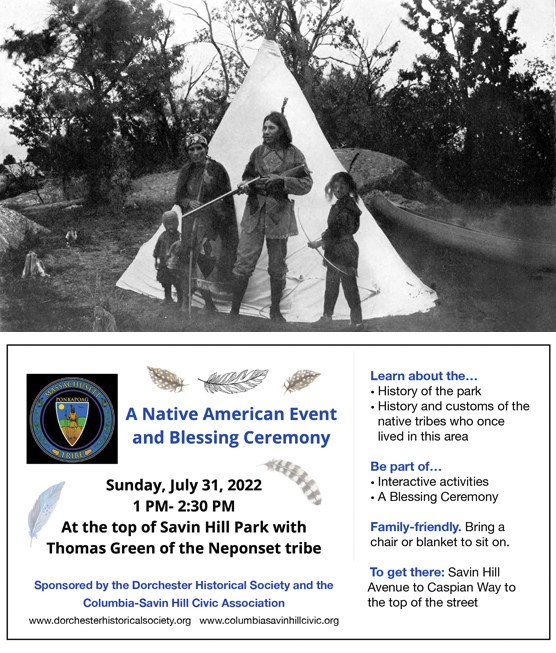
The book about the Dorchester Day celebration of 1907 included a photo captioned: Last Indian Camp on Savin Hill, on the site of the old fort. The photo was described as made by James H. Stark in 1884.
When the English settlers arrived in 1630, New England Native Americans did use the conical form as one of their house types, and the outer covering was made of bark. In the photo, however, the covering appears to be canvas, which was not a traditional material.
The following is from Charles C. Willoughby. “Houses and Gardens of the New England Indians.” American Anthropologist, Jan. – Mar., 1906, New Series, Vol. 8, No. 1 (Jan. – Mar., 1906), pp. 115-132.
“One of the types of Native American dwellings was the conical house. The framework was made of straight poles with their lower ends set into the ground enclosing the circular floor space, their upper ends being brought together and fastened. This frame resembled that of the skin tipi of the Plains tribes, and was covered with bark mats or pieces of bark which were sometimes held in by a second series of poles placed over them.”
To learn more about Native American history, consider attending the Native America Blessing Ceremony on July 31st.
